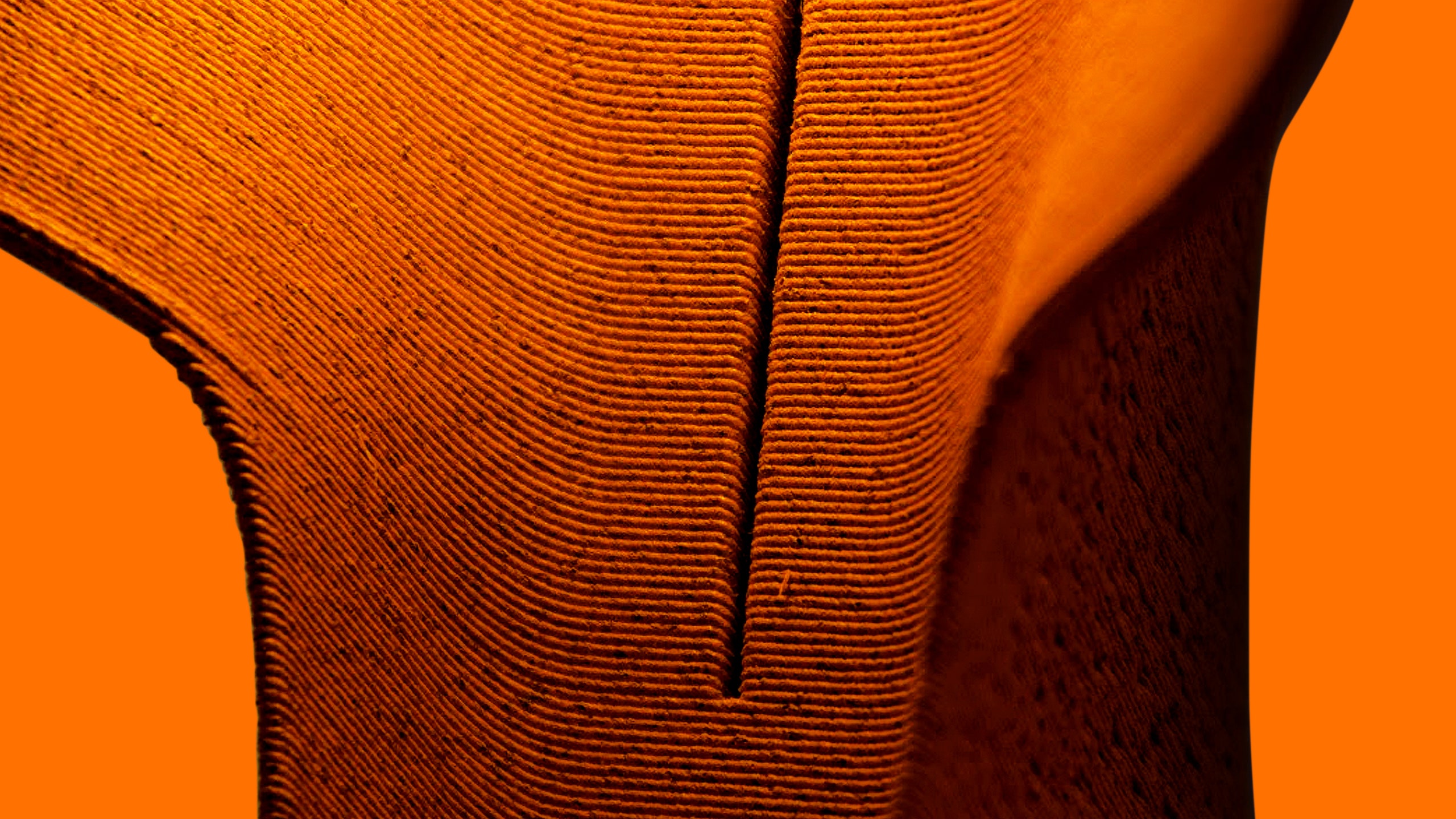Krill-Design recently released a lamp 3D printed completely from orange peels. For some time, the 3D printing world has been exploring environmentally friendly manufacturing as well as ways to reuse food waste. The Italian manufacturing company’s “Ohmie” lamp shows us what is possible with food waste as a feedstock and what the future of a sustainable world could look like. But is the biopolymer of this lamp really all that sustainable or is it a romanticized effort at creating environmentally friendly manufacturing processes?
Krill-Design specializes in using organic materials in creative, eco-friendly ways. The quote “From Trash to Treasure” is on the front page of their website. Currently, they are involved in creating furniture and household items from ground coffee beans, such as a coffee table, as well as manufacturing with orange peels.
According to Wired, it takes the Milan-based agency two to three Sicilian oranges to produce one lamp. The orange peels are added to fermented vegetable starches to create a biopolymer, which the company claims is not only biodegradable but also completely compostable.
However, Krill has not revealed what the biopolymer is. NewAtlas suspects it to be polylactic acid (PLA), a bioplastic derived from renewable resources like vegetable starch or sugar cane. This is in contrast to conventional plastics typically derived from nonrenewable petroleum reserves.
This sort of orange peel production resonates with an earlier project by another Italian design firm, Carlo Ratti Associati, in which they created a machine which simultaneously uses orange peels to print disposable cups and then fills the cups with freshly squeezed orange juice. In that case, the peels were milled into a fine powder, mixed with PLA, then heated and melted, and finally extruded through an integrated 3D printer. Krill’s biopolymer is different in that it can be used in almost any home 3D printer with the only adjustment being a change in temperature.
PLA can be produced using machinery already designed for petroleum-based plastics, which makes it cost efficient. One of the biggest benefits of this bioplastic is that it is biodegradable and can degrade at a significantly faster rate than conventional plastics. PLA’s most common uses nowadays are plastic bottles, package shrink wrap, to-go containers, and biodegradable medical devices that slowly allow the body to regain its innate ability. PLA has greatly reduced the carbon footprint in each of these industries.
However, PLA’s biggest downside is that it must be treated with high heat and digestive microbes at industrial composting facilities for it to be efficiently degraded, of which only a few hundred or so in the U.S exist. Degradation in industrial composting facilities can take anywhere between a few days to a few months. While PLA is marketed as a material that can be commonly recycled or composted, this is just not true. Researchers estimate, due to the lack of sunlight and oxygen at a typical landfill, it would take anywhere from 100 to 1000 years for PLA to degrade. In terms of biodegradability, this biopolymer offers little to no benefits compared to its petroleum based counterparts.
Biopolymers enter conversations about making manufacturing more circular, being that the waste from one industry be used in the production of another in an effort to reduce waste, pollution, and the using up of nonrenewable resources. Production of PLA from natural food waste significantly reduces carbon emissions compared to petroleum-based plastics. In theory these plastics can further be recycled or composted creating something new or simply nutritiously decomposing back into the earth.
With two weeks to go in its Kickstarter campaign, Ohmie The Orange Lamp has already raised nearly nine times its original crowdfunding amount!
Subscribe to Our Email Newsletter
Stay up-to-date on all the latest news from the 3D printing industry and receive information and offers from third party vendors.
Print Services
Upload your 3D Models and get them printed quickly and efficiently.
You May Also Like
Printing Money Episode 30: Q1 2025 Public 3D Printing Earnings Review with Troy Jensen, Cantor Fitzgerald
Printing Money is back with Episode 30, and it’s that quarterly time, so we are happy and thankful to welcome back Troy Jensen (Managing Director, Cantor Fitzgerald) to review the...
3DPOD 260: John Hart on VulcanForms, MIT, Desktop Metal and More
John Hart is a Professor at MIT; he´s also the director of the Laboratory for Manufacturing and Productivity as well as the director of the Center for Advanced Production Technologies....
Etsy Design Rule Change Reduces Selection of 3D Printed Goods
Online marketplace Etsy has implemented a rule change requiring all 3D printed goods on the site to be original designs. The update to the site’s Creativity Standards states, ¨Items produced using...
3DPOD 259: AM at Stratasys with Rich Garrity, Chief Business Unit Officer
Rich Garrity is the Chief Business Officer of Stratasys. Rich shares Stratasys´ vision and future with us. We talk about machines, applications, clients, and the market in general. What technologies...



































